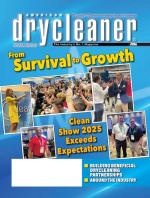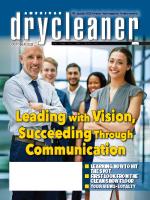Drycleaning Customers Who Left a Mark (Part 2)
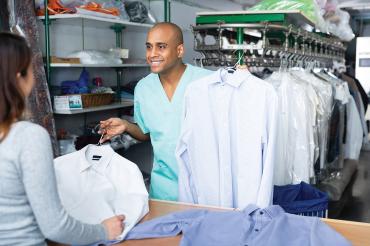
CHICAGO — One day might bleed into another for a drycleaning company, but sometimes customers come around who make an impression — to say the least.
In Part 1 of this series, we shared tales of surprise restorations of museum-quality wardrobes and customers who mistook their dry cleaners for “ATMs.” Today, we continue with more tales from the front counter.
The Elevator Mystery
Michael Harris, owner of Oceanside Cleaners in Jacksonville, Florida, learned that video surveillance is worth its weight in gold — especially when dealing with the occasional “missing” order.
“We have a customer, a really good customer, who’s been coming to us for more than 30 years,” Harris says. Once, the customer came in insisting he was missing a pair of pants.
“He said, ‘Mike, I know for a fact I put this in, and we’re missing it,’” Harris says. “I said, ‘OK, Tom, let me go back, because we video everything.’”
The video clearly showed the customer had picked up the order. It was a delicate situation, Harris says, showing a client they’re wrong without damaging the relationship. Still, the customer insisted he didn’t have it, so, to keep the relationship on healthy terms, Harris agreed to replace it.
A few weeks went by and Harris got a call.
“He says, ‘Mike, we found the clothes,’” Harris says. “They have a mansion on the ocean with an elevator in it, and as they were unloading their car, they got a call from their friends to go to dinner, so they just threw the order in the elevator and forgot about it.”
The couple doesn’t use the elevator much, so the next time they used it, they noticed the order still sitting there. This time, the customer made it right for his cleaner.
“He calls me and says, ‘I will never question you again. Not only am I going to buy you a bottle of wine, I’m taking you to Italy to get it,’” Harris says.
Building Empires, One Shirt at a Time
Kermit Engh, owner of Fashion Cleaners in Omaha, Nebraska, has had the privilege of watching some of his customers grow from small-business owners into titans of industry.
“This was back when I was first getting started, 30-some years ago,” Engh says. “There was a gentleman who came in every Monday and dropped off seven shirts. On Friday, (he) picked up seven shirts.”
The two would chat every week. The customer was trying to start a small software company related to stock investing, and he was working hard to get it off the ground.
“His name was Joe Ricketts,” Engh says. “Joe Ricketts was the founder and owner of TD Ameritrade. He’s currently (one of the owners) of the Chicago Cubs.”
The multibillionaire also owns Wrigley Field, extensive land in Wyoming, and other holdings.
“Nice guy,” Engh says. “They’re still customers when they’re in town.”
Another customer of Engh’s told him a story that shaped how he thinks about his customer base. He was a draftsman who worked for two homebuilders who were partners. When the two got into a spat and decided to go their separate ways, he suddenly didn’t have a job.
“Dennis decided he needed to feed his family,” Engh says, “so he went into all the home plans that he had drawn and decided to create a catalog of plans.”
Long before the internet, the man created a catalog that could be altered but was primarily standard custom homes. That became the beginnings of a company called Design Basics, and that company made him a billionaire.
These stories have inspired Engh to keep growing and learning from his successful clients. “What was their secret? How did they do what they did?”
Above and Beyond
Jen Whitmarsh of Snappy Dry Cleaning in Buffalo, New York, looks forward to serving customers who tell her like it is, because it gives her valuable insight that she can’t get anywhere else.
“The customers who share their feedback with the services we provide always stand out to me, because that shows that they truly have our business at heart,” she says. “These are the ones who say, ‘This was great,’ or ‘You know what, just so you know, this didn’t come back that well, and I just want to make you aware of it.’ These customers aren’t going anywhere. They just want to make us better.”
And, while Whitmarsh wants her company to go above and beyond what’s expected, sometimes it’s her customers who exceed expectations.
“We do have some customers who reward our team members,” she says. “We’ve had a couple of customers in the past month who sent us donuts, who sent us breakfast, who sent pizza to the team, just to show some appreciation randomly. Those are the customers who completely stand out and leave a special place in your heart, especially when they’re doing it for the team. They’re not just trying to reach out to me. They’re doing it for the team, who are truly the ones who leave a mark.”
Come back Thursday for the conclusion of this feature, where we’ll look at tales from the Big Apple. For Part 1 of this series, click HERE.

Media Training, Stain Removal Course Highlight DLI's February Schedule

Drycleaning Customers Who Left a Mark (Part 1)

Al Phillips Cleaners Hires Salazar for Vegas Expansion

What Will 2026 Bring? (Conclusion)

DL Expo West Adds Dry Cleaners/Laundromat Plant Tour
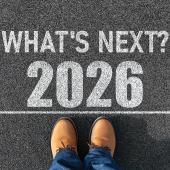
What Will 2026 Bring? (Part 2)

Tide Cleaners Expands in Cincinnati Market with New Acquisition

What Will 2026 Bring? (Part 1)
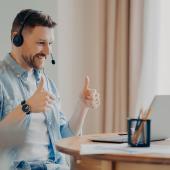
DLI Presents First Spanish-Language-Only Stain Removal Course

Classic Counter Training Book Updated
Podcasts for You
Workplace Violence & Prevention
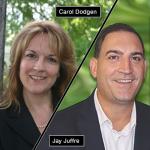
After a deadly shooting at a textile care facility earlier this year, preventing workplace violence has gained a new focus for many dry cleaners. Carol Dodgen of Dodgen Security Consulting and Jay Juffre from ImageFIRST discuss warning signs, training, prevention and more.
Making the Most of a Trade Show

Messe Frankfurt’s Greg Jira joins us to discuss the benefits of attending industry trade shows, including ways to prepare prior to the event to get the most out of your time there. We also get a preview of Clean Show 2022.
What It Takes To Build A Plant Design Award Winner

From site selection to cutting the ribbon, what it takes to design a drycleaning plant, told by the grand-prize winner of American Drycleaner's 58th Annual Plant Design Awards, Tide Dry Cleaners, Sarasota, Fla.
From the Resource Center
The Complete Spotting Guide & More

Attracting Customers & Increasing Profits—Drycleaning Marketing 101

How to Profit by Going Green: Simple Strategies That Are Friendly to The Earth & The Bottom Line

Latest Digital Editions
Digital EditionAmerican DrycleanerDec/Jan

- What Will 2026 Bring?
- Drycleaning Customers Who Left a Mark
- Bridging the Generation Gap in Your Drycleaning Business
